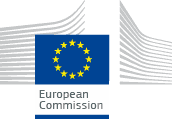PROJECT DESCRIPTION
BACKGROUND
Four out of five EU citizens live in urban areas and their quality of life is directly linked to their urban environment. In the past 10 years, European cities have made major efforts to tackle traffic congestion and related pollution. However, little attention has been paid to the goods distribution process, which is one of the major sources ofpollution in urban areas. At the same time, the attractiveness of cities also depends on the richness of the economic exchanges taking place in the city. It is therefore important to maintain trade while taking account of environmental considerations in order to make Europe a more attractive place to work and invest in line with the Lisbon Treaty.
OBJECTIVES
The goal of the LIFE+ Urbannecy project was to demonstrate an integrated and innovative approach to urban logistics, encouraging cooperation among the actors involved, use of new distribution schemes and the implementation of a range of measures (regulatory, organisational, operational and technological) that would reduce the negative effects of current urban logistics.
The project aimed to develop a new logistic tool, Urban Distribution Centre (UDC), to reduce the environmental impact of parcel deliveries (greenhouse gas and particulate matter emissions) and improve the quality of life (reduction of traffic and noise) in Annecy city centre. The project planned to test the applicability of the UDC as a sustainable and economically-viable 'last mile' delivery service. This integrated and innovative approach would encourage cooperation among the actors involved in the logistics chain, the use of new distribution schemes and the implementation of regulatory, organisational, operational and technological measures.
Specific aims included:
These aims would be achieved through technological developments, such as the adaptation of electric lorries of high load capacity to deliver goods from different transport operators to the city centre, and the use of innovative electrical bicycles to improve delivery to the least accessible areas.
RESULTS
The LIFE+ Urbannecy project developed a logistic tool, Urban Distribution Centre (UDC), to reduce the environmental impact of parcel deliveries. The UDC, which has been operational in Annecy city centre since February 2015, is being run by associated beneficiary PURE, a company that was specifically created for this purpose. The logistics platform organises the last mile delivery of goods and products via the use of electrical vehicles owned by carrier companies. It therefore decreases the overall number of large vehicles entering the city centre and adding to its congestion. The greenhouse gas emissions produced by last mile deliveries carried out within the project were found to have been reduced by 96%, while the collection of WEEEs reduced the production of pollutants and greenhouse gases by 30%.
The UDC gradually increased its number of clients and has also developed additional activities, such as the collection of different types of waste (WEEE and food waste from restaurants), the collection and transport of goods to local producers and the remote storage for retailers. To some degree, these additional services are compensating for the difficulty of finding new for clients for the last mile delivery service. It appears that a limit has been reached, mainly due to the low economic margin for transport companies, the lobbying efforts of the sector and the opening up of new solutions. The urban transport sector is evolving extremely rapidly, and the project needed to adapt to these changes.
The project also encouraged the local authorities to adopt a more integrated approach to urban management and regulations favourable to this new approach are expected to be developed. The preparatory tasks of the project contributed greatly to the technical knowledge of logistic and urban transport parameters in Annecy and elsewhere. Even though the project was not as successful as anticipated, the methodology developed represents a valuable resource for future initiatives. Indeed, several urban centres, including Chambry, Grenoble and Geneva, have expressed interest in developing their own UDCs and will benefit from the experiences of the project.
Further information on the project can be found in the project's layman report and After-LIFE Communication Plan (see "Read more" section).

